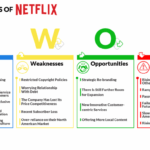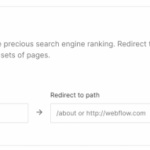Is website traffic a KPI? This question delves into the crucial role website traffic plays in measuring success. Understanding website traffic metrics like unique visitors, page views, bounce rate, and time on site is fundamental. This exploration examines when website traffic serves as a key performance indicator (KPI) and when it falls short, considering factors such as , content marketing, and user experience.
We’ll explore the nuances of website traffic as a KPI, comparing it to alternative metrics like conversion rates and customer acquisition cost. This analysis provides a comprehensive understanding of how to effectively utilize website traffic data to achieve business objectives. A detailed look at the relationship between website traffic and business goals, as well as methods to measure the effectiveness of website traffic as a KPI, will be covered.
Defining Website Traffic
Website traffic is a crucial metric for understanding how users interact with a website. It provides valuable insights into the effectiveness of marketing campaigns, the appeal of website content, and the overall health of a digital presence. By analyzing various traffic metrics, businesses can gain a deeper understanding of their audience and tailor their strategies for improved performance.Understanding website traffic metrics goes beyond simply counting visits.
It’s about understanding thequality* of those visits, the user journey, and the overall engagement with the site. This detailed exploration will help you interpret the data and use it to optimize your website’s performance.
Website Traffic Metrics
Website traffic encompasses various metrics, each offering unique insights into user behavior. These metrics are vital for understanding how users interact with a website and making informed decisions about improving the user experience.
- Unique Visitors: This metric tracks the number of distinct individuals who visit a website within a specific timeframe. It’s a key indicator of the reach and visibility of a website, showing how many different people are encountering your content.
- Page Views: This metric counts the total number of pages viewed on a website. It reflects the overall interest in different parts of the website and can highlight popular content.
- Bounce Rate: This metric measures the percentage of visitors who leave a website after viewing only one page. A high bounce rate suggests that the landing page or content may not be relevant to the visitor’s search or interest.
- Time on Site: This metric measures the average amount of time spent by visitors on a website. A longer time on site usually indicates higher engagement and satisfaction with the content.
- Conversion Rate: This metric measures the percentage of website visitors who complete a desired action, such as making a purchase or filling out a form. It’s a critical indicator of the effectiveness of the website in achieving business goals.
- Referral Traffic: This metric tracks the number of visitors who come to the website from another website. It’s a key indicator of the effectiveness of marketing partnerships and collaborations.
Data Collection and Measurement
Website traffic data is gathered using various tools and technologies. These tools monitor user interactions with the website and compile the necessary data for analysis. Common methods include:
- Web Analytics Platforms: Tools like Google Analytics collect data on user behavior, including page views, bounce rates, and time on site. These platforms provide detailed reports and visualizations, enabling deep insights into website traffic.
- Cookies and Tracking Technologies: Cookies are small files stored on a user’s computer that track their activity on a website. These cookies help to identify unique visitors and track their behavior across multiple pages.
- Server Logs: Web servers record detailed information about each request, including the IP address of the visitor and the pages accessed. This data provides a more technical understanding of traffic patterns.
Comparison of Website Traffic Metrics
The table below compares and contrasts different website traffic metrics, highlighting their significance and how they contribute to a comprehensive understanding of website performance.
| Metric | Description | Significance | Example Impact |
|---|---|---|---|
| Unique Visitors | Number of distinct individuals visiting the site | Measures website reach and visibility | High unique visitor count suggests strong brand awareness |
| Page Views | Total number of pages viewed | Indicates content popularity and user interest | High page views for a specific page show its appeal |
| Bounce Rate | Percentage of visitors leaving after one page view | Indicates content relevance and user experience | High bounce rate might signal a need for better content |
| Time on Site | Average time spent on the website | Reflects user engagement and content quality | Longer time on site suggests engaging content |
Understanding KPIs

KPIs, or Key Performance Indicators, are crucial for any business aiming to track progress and measure success. They provide a quantifiable way to assess how well a company is achieving its goals. Understanding what constitutes a KPI, and how to effectively use them, is fundamental to strategic decision-making. A deep understanding of KPIs can help you make better-informed choices, allocate resources effectively, and ultimately drive positive outcomes.KPIs are not just abstract concepts; they’re tangible metrics that reflect the performance of various aspects of a business.
They are the numbers that tell the story of your company’s progress, and by understanding these metrics, you can make informed decisions to optimize your strategy. Different industries and departments have their own unique KPIs, reflecting the specific objectives and goals of each.
Defining Key Performance Indicators
A KPI is a measurable value that demonstrates how effectively a company is achieving key business objectives. It quantifies the performance of a specific process or activity. A key characteristic of a good KPI is its direct link to strategic goals. A KPI must be clearly defined, easily measurable, and consistently tracked. A strong KPI allows for objective comparisons across time and between different business units.
Essentially, a KPI tells you if you’re moving in the right direction.
Examples of KPIs in Other Business Contexts
KPIs are used across various sectors, not just in the realm of website traffic. Here are some examples:
- Sales Performance: KPIs in sales might include the average order value, conversion rate, customer acquisition cost (CAC), or customer lifetime value (CLTV). These metrics provide insight into the efficiency and profitability of sales efforts.
- Marketing Effectiveness: Marketing KPIs focus on the return on investment (ROI) of marketing campaigns. Examples include click-through rates (CTR), cost per lead (CPL), or engagement rates. Tracking these KPIs helps assess the effectiveness of marketing strategies.
- Customer Service: KPIs in customer service might include average resolution time, customer satisfaction scores (CSAT), or first call resolution (FCR). These metrics reflect the quality of service provided to customers.
- Production Efficiency: In manufacturing, KPIs might include production output per hour, defect rate, or machine uptime. These metrics are critical to maintaining productivity and quality.
What Makes a Metric a KPI?
Several criteria distinguish a KPI from a simple metric. A metric, in its simplest form, is a quantifiable measure. A KPI, however, must be directly linked to a strategic objective.
While website traffic can be a useful metric, it’s not always the best KPI. Focusing on brand visibility is crucial, too. After all, high traffic doesn’t automatically translate to brand recognition. Understanding how to increase your brand visibility, like what it means and how to boost it, can significantly impact your overall success. For a deeper dive on this topic, check out this helpful guide on brand visibility what is it how can i increase it.
Ultimately, website traffic is only one piece of the puzzle; a strong brand presence is key for long-term growth.
- Alignment with Strategic Objectives: A KPI directly measures progress towards a specific business goal. For example, a KPI for a marketing campaign might be the number of leads generated, which directly contributes to the objective of increasing sales.
- Measurable and Trackable: The data associated with the KPI must be readily measurable and consistently tracked. For example, if a KPI is customer satisfaction, the method for measuring it (e.g., surveys) needs to be established.
- Actionable Insights: KPIs provide actionable insights. By tracking the KPI, the business can identify areas for improvement and make data-driven decisions. For instance, if a sales KPI shows a decline, the sales team can analyze the reasons and adjust their strategies.
How KPIs are Used to Measure Success
KPIs provide a framework for measuring success and enabling effective decision-making. Regular monitoring and analysis of KPIs are essential to ensure that the business remains on track to meet its goals.
- Benchmarking: Comparing KPIs to industry benchmarks or previous performance data can reveal areas where the company excels or needs improvement.
- Identifying Trends: Tracking KPIs over time can reveal trends and patterns that might indicate potential problems or opportunities. For example, a consistently declining customer satisfaction score might signal the need for service improvements.
- Resource Allocation: KPIs help guide resource allocation by identifying areas where resources are needed most or can be reallocated for better results. If a marketing campaign is underperforming, resources can be shifted to a more effective strategy.
Website Traffic as a KPI
Website traffic, the number of visitors to a website, is a readily available metric. However, its value as a key performance indicator (KPI) depends heavily on the specific goals and context of the website. Simply having high traffic doesn’t automatically equate to success. A deeper understanding of how website traffic relates to other business objectives is crucial.Understanding the nuances of website traffic as a KPI is key to leveraging it effectively.
It’s not a universal metric; its applicability varies significantly depending on the website’s purpose and the business objectives it supports. Sometimes, high traffic might be a positive sign, while in other cases, it could be irrelevant or even misleading.
Circumstances Where Website Traffic is a Suitable KPI
Website traffic can be a valuable KPI when it directly correlates with achieving business objectives. For instance, if a website’s primary goal is to generate leads or drive sales, then website traffic becomes a relevant indicator of progress. A strong correlation between traffic and desired outcomes suggests that website traffic is a suitable KPI.
Examples of Websites Where Website Traffic is a Suitable KPI
Several types of websites benefit from using website traffic as a KPI. E-commerce websites, for example, frequently use website traffic as a key metric. High traffic can directly translate to more sales and revenue. Similarly, websites focused on lead generation often see website traffic as a proxy for potential customers. Content marketing sites can use website traffic to gauge the effectiveness of their content strategy.
The more traffic, the more visibility and engagement.
Scenarios Where Website Traffic is Not a Suitable KPI
In some cases, website traffic may not be a relevant KPI. For instance, if a website’s primary goal is to facilitate internal communication or collaboration within a company, website traffic might be irrelevant. Similarly, a website designed for internal training or support might not benefit from focusing on website traffic as a metric.
Table: Website Traffic as a KPI
| Scenario | Is Website Traffic a Suitable KPI? | Reasoning |
|---|---|---|
| E-commerce website aiming for increased sales | Yes | Higher traffic often translates to more potential customers and increased revenue. |
| Blog focused on building brand awareness | Potentially | Traffic can be a measure of brand visibility and audience engagement, but other metrics like social media shares and backlinks are also important. |
| Company intranet for internal communication | No | Internal traffic is not a measure of external success or customer engagement. |
| Website for a non-profit organization focusing on volunteer recruitment | Potentially | Increased traffic could lead to more volunteers, but other metrics like volunteer application rates are more relevant. |
| Website for a library offering online resources | Potentially | Traffic might indicate interest in library services, but other metrics like resource usage and user feedback are crucial. |
Factors Affecting Website Traffic
Website traffic is a crucial metric for businesses, reflecting how many users interact with their online presence. Understanding the factors that influence this traffic is essential for developing effective strategies to attract and retain visitors. A variety of elements, both controllable and uncontrollable, play a role in the overall volume of website traffic.A strong online presence is built on more than just a visually appealing design.
The performance of a website, the quality of its content, and its accessibility all contribute to the user experience, which ultimately affects traffic. Knowing what drives visitors to a site is critical for optimizing marketing efforts and maximizing engagement.
Impact on Website Traffic
Search engine optimization () plays a pivotal role in driving organic traffic. Effective strategies focus on improving a website’s visibility in search engine results pages (SERPs). This involves optimizing website content, meta descriptions, and other elements to ensure relevance to user searches. High-ranking websites are more likely to attract visitors who are actively seeking information or products related to the site’s offerings.
By incorporating relevant s and phrases into website content, businesses can attract a targeted audience seeking specific information. A website’s technical is also crucial. Factors like site speed, mobile-friendliness, and proper site structure impact how search engines crawl and index the site.
Content Marketing’s Influence on Website Traffic
High-quality content is fundamental to attracting and retaining website visitors. Content marketing strategies, encompassing blog posts, articles, videos, and infographics, attract a specific target audience. Engaging and informative content encourages visitors to explore the website further and increases the likelihood of return visits. This consistent delivery of valuable content builds trust and credibility with potential customers. The quality and consistency of content significantly impact the volume of website traffic.
Social Media’s Contribution to Website Traffic
Social media platforms are powerful tools for driving traffic to websites. Strategic social media campaigns can expose a website to a wider audience. Sharing engaging content, interacting with followers, and participating in relevant discussions can increase brand awareness and generate significant traffic. By leveraging social media’s reach, businesses can promote website content and attract new visitors.
While website traffic might seem like a straightforward KPI, digging deeper reveals a more complex picture. Ultimately, is website traffic a good KPI depends on your goals. Understanding the technical SEO behind a site’s performance is crucial. For example, if your site isn’t crawlable or indexed properly, high traffic numbers might not reflect actual engagement.
Knowing if technical SEO is hard to implement is technical seo hard can help determine if your traffic is a reliable indicator of success. In the end, website traffic alone isn’t the whole story; it’s one piece of a larger puzzle.
Advertising’s Effect on Website Traffic
Online advertising, including paid search campaigns and social media ads, can significantly boost website traffic. Targeted advertising campaigns can reach specific demographics and interests, leading to a measurable increase in visitors. Well-crafted advertisements with compelling calls to action are essential for effective conversion. Paid advertising can be a rapid way to increase website traffic and generate leads, especially when targeting specific demographics.
User Experience’s Role in Driving Website Traffic
User experience (UX) is critical to maintaining and increasing website traffic. A positive user experience ensures visitors find the information they need quickly and easily. Intuitive navigation, clear calls to action, and visually appealing design all contribute to a seamless user experience. A user-friendly website encourages visitors to explore further and ultimately boosts traffic. Websites with poor navigation or slow loading times often experience decreased traffic and user engagement.
Technical Issues’ Impact on Website Traffic
Technical issues can severely impact website traffic. Slow loading times, broken links, and compatibility problems with different devices can deter visitors. Maintaining website functionality and addressing technical problems promptly is crucial for attracting and retaining visitors. These technical glitches directly affect the user experience, which has a negative impact on website traffic.
Relationship Between Marketing Strategies and Website Traffic
| Marketing Strategy | Impact on Website Traffic |
|---|---|
| Increases organic traffic through improved search engine rankings. | |
| Content Marketing | Attracts targeted traffic through engaging and informative content. |
| Social Media | Drives traffic through brand awareness and social sharing. |
| Advertising | Generates significant traffic through targeted campaigns. |
| User Experience | Encourages visitor retention and exploration through intuitive design. |
| Technical Issues | Decreases traffic due to slow loading times and usability problems. |
Alternative KPIs for Website Performance: Is Website Traffic A Kpi

Website traffic, while a crucial metric, doesn’t always tell the whole story of a website’s success. To gain a deeper understanding of how well a site is performing, we need to look beyond raw visitor numbers and delve into more nuanced key performance indicators (KPIs). These alternative KPIs provide a more comprehensive picture of user engagement, value creation, and ultimately, business impact.Looking beyond just counting visitors, we can analyze metrics that measure tangible results.
This allows for a more precise evaluation of the website’s effectiveness in achieving its objectives. Conversion rates, lead generation, and customer acquisition cost are among these valuable alternative KPIs.
Conversion Rates
Conversion rates measure the percentage of website visitors who complete a desired action, such as making a purchase, signing up for a newsletter, or filling out a contact form. A high conversion rate indicates that the website is effectively guiding users towards the desired outcome. For instance, a company selling online courses might track the percentage of visitors who complete the enrollment process.
While website traffic can be a key indicator of success, it’s not always the best KPI. Understanding how Google’s algorithm works, like in the google panda update guide , is crucial. A sudden drop in traffic could be a result of algorithmic changes, rather than a reflection of your content’s effectiveness. So, while traffic is helpful, it’s just one piece of the puzzle when assessing overall website performance.
A low conversion rate could indicate issues with the website’s design, navigation, or call-to-action elements. Improving these aspects can significantly boost the conversion rate.
Lead Generation
Lead generation KPIs focus on identifying and nurturing potential customers. This includes metrics like the number of leads generated per month, the quality of leads (e.g., lead qualification scores), and the conversion rate of leads into customers. A strong lead generation strategy ensures a constant flow of qualified prospects. For example, a software company might track the number of demo requests generated through their website landing pages.
This provides a valuable insight into the effectiveness of their marketing campaigns.
Customer Acquisition Cost (CAC)
Customer acquisition cost (CAC) measures the average cost of acquiring a new customer. This crucial metric is calculated by dividing the total marketing and sales costs by the number of new customers acquired. A lower CAC indicates greater efficiency in customer acquisition. For instance, a retail company might analyze the cost of acquiring each customer through social media advertisements.
Optimizing the customer acquisition process can directly impact profitability and long-term sustainability.
Comparison of KPIs
| KPI | Definition | Strengths | Weaknesses |
|---|---|---|---|
| Website Traffic | Number of visitors to a website | Easy to track and understand; readily available data. | Doesn’t reflect user engagement or business value; doesn’t show if visitors are actually doing what you want them to do. |
| Conversion Rate | Percentage of visitors who complete a desired action. | Directly measures user engagement and conversion; indicates how effectively the website guides users. | Requires clear definitions of desired actions; can be influenced by external factors. |
| Lead Generation | Number and quality of leads generated. | Focuses on potential customers; indicates effectiveness of marketing efforts. | Quality of leads needs careful definition and assessment; can be difficult to measure accurately. |
| CAC | Average cost of acquiring a new customer. | Indicates the efficiency of marketing and sales; crucial for profitability analysis. | Requires accurate cost tracking; can be impacted by factors beyond the website’s control. |
Measuring the Effectiveness of Website Traffic as a KPI
Website traffic, while a crucial metric, doesn’t inherently indicate success. To truly understand its value, you need to connect it to your business objectives. Effective measurement goes beyond simply counting visitors; it involves analyzing the quality of that traffic and its impact on key performance indicators (KPIs) like conversions, sales, and customer engagement.Understanding how website traffic translates into tangible results is essential.
This requires careful analysis of various factors and setting clear benchmarks. The effectiveness of website traffic as a KPI hinges on how well it aligns with your overall business strategy and how you track its impact on desired outcomes.
Methods for Measuring Traffic Effectiveness
Website traffic measurement extends beyond simple visitor counts. Effective analysis involves examining user behavior and the actions they take on your site. Understanding the sources of traffic, user engagement metrics, and conversion rates is crucial.
Analyzing Website Traffic Data
Analyzing website traffic data requires a systematic approach. Begin by identifying key metrics relevant to your business goals. For example, if your objective is lead generation, focus on metrics like form submissions, contact requests, and time spent on specific pages. A detailed analysis will reveal patterns, trends, and insights that can be used to optimize your website and improve your results.
- Source Analysis: Determining where your traffic originates (e.g., search engines, social media, referrals) helps identify effective marketing channels. Analyzing the traffic sources reveals which marketing campaigns are driving the most valuable visitors, allowing for targeted improvements.
- User Behavior Analysis: Tracking user behavior metrics like bounce rate, time on site, and pages per visit provides insights into user engagement. High bounce rates might suggest issues with content relevance or website navigation. Analyzing this behavior reveals opportunities to enhance user experience and encourage deeper engagement.
- Conversion Rate Analysis: Measuring the percentage of visitors who complete desired actions (e.g., making a purchase, signing up for a newsletter) is crucial. High conversion rates indicate that your website is effectively driving the desired outcomes. Low conversion rates might point to problems with the conversion process itself, potentially requiring improvements to the website’s design or the clarity of calls to action.
Setting Clear Goals and Tracking Progress, Is website traffic a kpi
Defining clear, measurable goals is paramount. Without specific objectives, evaluating the effectiveness of website traffic becomes vague. Establish targets for key metrics, such as desired conversion rates, specific numbers of leads, or an increase in sales. Tracking progress against these goals is crucial to determine if your website traffic is genuinely contributing to your business objectives.
Example: Measuring Effectiveness
Imagine a company aiming to increase sales through online orders. Their website traffic increased by 20% in the last quarter. Analyzing this traffic data revealed that the increase was primarily driven by organic search. Furthermore, the conversion rate for online orders also rose by 15% during the same period. This demonstrates a positive correlation between increased traffic and improved sales.
Table: Methods of Measuring Traffic Effectiveness
| Metric | Method | Example Analysis |
|---|---|---|
| Traffic Source | Analyze referral sources (e.g., Google, social media) | High traffic from social media indicates a successful social media campaign. |
| User Behavior | Track time on site, bounce rate, pages per visit | High bounce rate suggests website content might not be engaging. |
| Conversion Rate | Measure percentage of visitors completing desired actions | Low conversion rate on a specific product page suggests a need for improvement in the checkout process. |
Connecting Website Traffic to Business Objectives
Website traffic, while a valuable metric, isn’t an end in itself. Its true power lies in its ability to translate into tangible business outcomes. Understanding how website traffic correlates with key business objectives is crucial for making data-driven decisions and optimizing performance. This section delves into the practical applications of website traffic analysis, showing how it fuels growth and informs strategic choices.Website traffic is a crucial indicator of a company’s online presence and effectiveness.
Analyzing this data reveals patterns and trends that can be leveraged to align marketing efforts with business goals. From increasing sales conversions to enhancing brand awareness, website traffic data provides actionable insights. This allows businesses to tailor their strategies for maximum impact, leading to improved return on investment (ROI).
Linking Traffic to Sales Conversions
Understanding the relationship between website traffic and sales conversions is vital. Higher traffic doesn’t automatically translate to more sales, but a well-structured website and targeted marketing campaigns can leverage traffic to drive conversions. Analyzing user behavior on the website, such as time spent on pages, bounce rates, and click-through rates, can pinpoint areas for improvement in the sales funnel.
Impact on Brand Awareness
Website traffic can be a key indicator of brand awareness. High traffic often correlates with increased brand visibility and recognition. This can be further enhanced through effective strategies and content marketing efforts. By attracting the right audience, companies can cultivate a strong brand image and foster a loyal customer base.
Improving Marketing Campaigns
Website traffic data provides valuable feedback on the effectiveness of marketing campaigns. By tracking traffic sources (e.g., social media, search engines, email), companies can identify which channels are performing well and which need adjustments. This data-driven approach allows for optimizing campaigns to maximize return on investment and better target the desired audience.
Correlation Table: Website Traffic and Business Objectives
| Business Objective | Website Traffic Metric | Impact |
|---|---|---|
| Increased Sales | Conversion rate, time on site, bounce rate | Higher traffic with improved conversion rates indicates effective marketing and product strategies. |
| Enhanced Brand Awareness | Unique visitors, returning visitors, traffic from various sources | High traffic volume and consistent engagement suggests growing brand recognition and recall. |
| Improved Customer Engagement | Average session duration, pages per visit | Higher engagement metrics indicate positive user experience and interest in the content. |
| Increased Lead Generation | Landing page views, form submissions, email sign-ups | Increased traffic accompanied by high lead generation rates shows the effectiveness of targeted campaigns. |
Ultimate Conclusion
In conclusion, while website traffic can be a valuable metric, it’s crucial to evaluate whether it aligns with specific business goals. This exploration has highlighted the importance of considering alternative KPIs, such as conversion rates, alongside website traffic to gain a more complete picture of website performance. Ultimately, the success of using website traffic as a KPI depends on its strategic connection to overarching business objectives.






